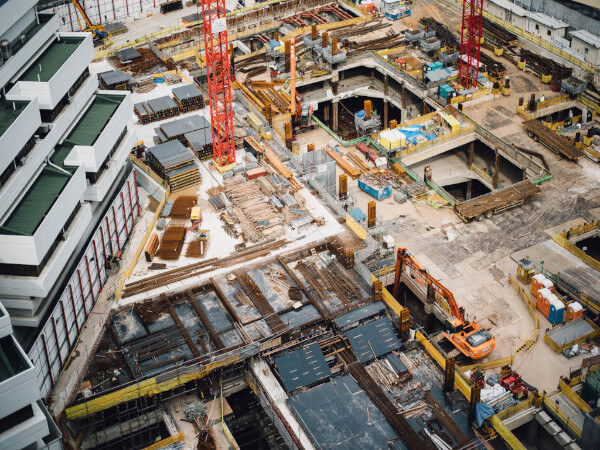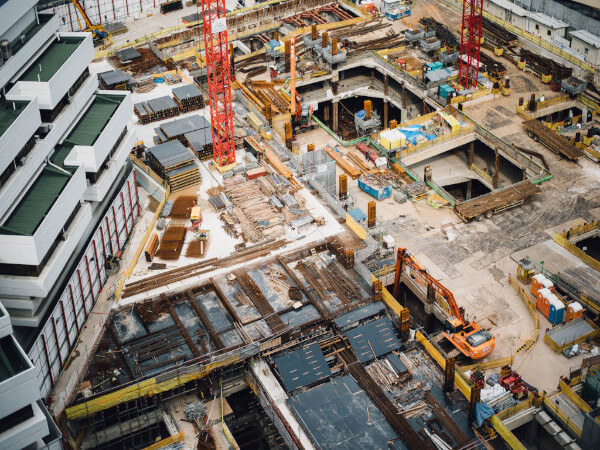Khatib & Alami (K&A) is a multidisciplinary urban and regional planning, architectural and engineering consulting company operating across the Middle East, Africa, South-East Asia and Europe. With more than five decades of experience and expertise within the architecture, engineering, and construction industry, K&A have worked on some of the world’s most challenging projects.
Identifying challenges and finding solutions
As a sector that has seen its greatest evolutions in the past decade, K&A were amongst the first companies to truly adopt digital and BIM as part of its bid to be more time and cost efficient, while providing a higher standard of output for its clients. As a major multinational working on a range of multidisciplinary projects, K&A are required to collaborate with multiple different stakeholders both internally and externally. They recognised that they would need to centralise project data and create one single source of truth when it comes to project documentation to support them in managing the sheer volume and range of ongoing projects across their many different design centres. This would mean their project teams would reduce the amount of time they spent searching for, uploading, and downloading project information. They also wanted to reduce their dependency on local servers and move to a way of working that would enable them to form more collaborative partnerships with their supply chain partners.
By leveraging cloud collaboration, centralised and consolidated data for each project was open to the full range of necessary stakeholders, which in some cases went as high as 200 project team members across a number of different organisations. As a result, knowledge sharing and a comprehensive understanding of cloud collaboration and its features became more intrinsically linked to K&A’s culture. Dr. Ahmad Faeq, Senior Director for Projects Knowledge Management and Operational Excellence reflects:
“Since we started the transition to digital, we embedded technology implementation as part of our knowledge management. Based on this, we created communities of practice which became the platform to train our teams how to use cloud collaboration tools more effectively. As a result, knowledge management is now at the heart of the company, which interconnects with everything else.”
For many companies, the concept of working remotely was only implemented because of the pandemic. For K&A, however, its early-stage adoption of BIM, coupled with their multinational design centers in Cairo, Beirut, UAE and Bangalore, meant that remote working was already well underway.
“We were already using Autodesk’s Construction Cloud remotely to drive strong collaboration between our design centres, so it was a fairly smooth step when the transition to work from home became necessary,” commented Micheline Nader, Senior Project Engineer, BIM manager – road & highways.
“Before cloud collaboration tools, you were unable to work from home or remotely effectively. If we were required to do either, we were unable to access the same model, meaning any changes made would have to be saved and pasted onto the local server the following day,” recalled Yasmina Kridly, BIM Manager and Design Architect. “Since implementing Autodesk’s cloud solutions, our team can access the same model in real time, a feature that has given us a strategic advantage during the pandemic. Overall, it has enhanced our troubleshooting and submission processes by up to 90%.”
Where previous work required printed PDFs and stacks of paper stored across several locations, the integration of working in a cloud environment not only meant a faster, more centralised way to share accurate data, but an environmentally-friendly reduction in year-on-year printing from 2019 – 2020 by around 50 – 60%.
Collaboration as standard – promoting team-centric execution and culture
Thanks to K&A’s existing movement towards digital infrastructure, and spurred on by the pandemic, cloud collaboration soon played a centralised role in several projects resulting in K&A investing in more licenses and company-wide familiarisation.
“As the benefits of Autodesk Construction Cloud are significant, it is now mandated that all projects are stored on the cloud, regardless of scale or value. As one source of information, for each project, all design documents are stored in our common data environment for shared use, following ISO 19650 workflow. The client and stakeholders also have access to the project in a digital environment, which means the client can follow the work-in-progress model and provide feedback at an early stage,” commented Micheline Nader.

BIM – the foundation of technological progress
For Dr. Ahmad Faeq, the value of Autodesk’s Cloud solutions extend beyond traditional training and into a new era of ongoing development. “When we talk about BIM as the new standard, this is what I consider our first step. From here we’re able to build and develop. For example, we’re working on BIM and GIS integration to create what we call smart city management, where we link BIM with IoTs to create command centres for clients and landlords to monitor and manage their facilities during and after the construction projects. The ceiling isn’t fixed for us, so we will keep adding the technological components day after day.”
One of the challenges presented by the pandemic was the requirement to migrate project data into Autodesk’s cloud solutions for ease of development between parties, which simultaneously occurred while hiring new staff to cater for the demand. Fortunately, the data migration worked seamlessly, as did the adoption of the new staff who were able to familiarise themselves with the software and functionality.
Cited as one of the main reasons Autodesk Construction Cloud succeeded in reaching such a fast user-adoption rate is its carefully designed user interface, user experience and supplemental training provided by Autodesk. Reflecting on her earlier experiences with some predecessors of cloud solutions, Yasmina Kridly commented, “Since we started working with Revit more than a decade ago, every Autodesk product has consistently become more intuitive and mature, with a strong focus on the user experience. This is a feature which has been carried forward into Autodesk’s Construction Cloud solutions. While many other platforms require special training or expert advice, you are quickly able to get used to Autodesk Construction Cloud, even after using it for only a few hours.”

Enhanced productivity through digital collaboration
From a high-level perspective, Autodesk Construction Cloud’s ability to provide a collaborative platform for teams to interact and deliver has had a unifying effect on K&A’s teamwork culture, as highlighted by Dr. Ahmad. “Autodesk Construction Cloud was one of the tools we used to fortify and strengthen the communication within the project teams. This is where the real production of our investments happened.”
This sentiment is echoed by Yasmina Kridly: “The integration of Autodesk Construction Cloud has made a huge difference. Firstly, you can access it anywhere in the world. Secondly, we save a lot of time in transferring data between design centres. Today, I’m able to review and comment on documents immediately, meaning we’re saving a significant number of working hours as a business. This was all made possible thanks to the quick responses of the Autodesk team. Whenever we had a question, there was a solution suggested by the Autodesk team. When we first started using Autodesk Construction Cloud, it didn’t have all the features it has today. Through our team making suggestions, Autodesk were very quick to implement improvements and we’ve been able to fine tune our common data environment to be perfectly suited to our exacting requirements. One of the most useful was enabling real-time cloud collaboration during the design process, a feature that saves our team between 30 – 40% in time efficiency.”
Elaborating further, Dr. Ahmad added, “For a company like K&A where time is highly valuable, the saving of 30 – 40% isn’t just a win for the projects in hand, but also for the company which can utilise its skilled teams on other projects. Certainly, Autodesk Construction Cloud, along with our digitally enabled internal environment, has been a major driver in our digital transformation, which has been great for our productivity as a business.”
“Autodesk Construction Cloud is our solution for collaboration.”
—Micheline Nader, Sr. Project Engineer, BIM manager, Khatib & Alami
Summarising her experience, Micheline Nader commented, “Utilising Autodesk Construction Cloud has significantly improved decision-making and project performance leading to reliable, clash-free, sustainable projects that benefit from low maintenance costs, risks, and higher revenue streams. It has become a lifeline for using data, consuming content and engaging in digital applications.”
The post Khatib & Alami Achieves Time Savings of up to 40% Through a Cloud Collaboration Strategy appeared first on Digital Builder.

![]()



















